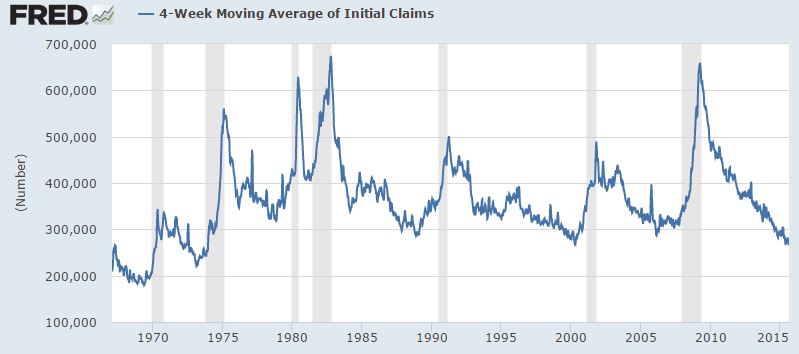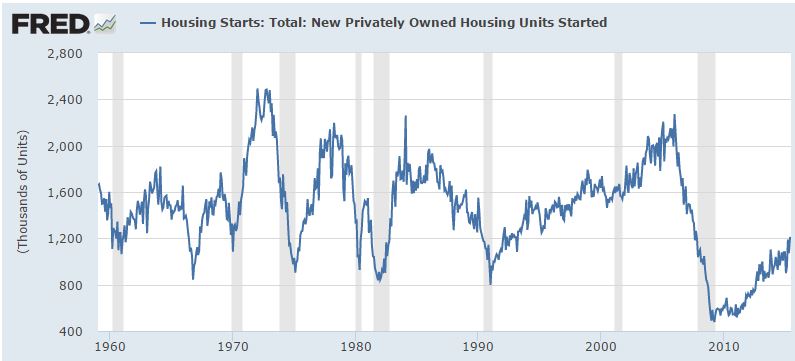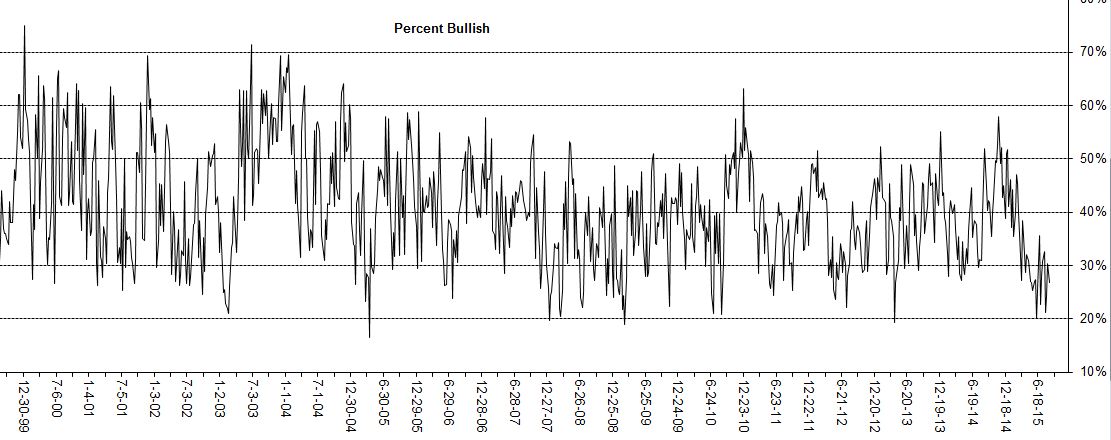I just thought I’d put up a quick post as it’s Sunday night and I’m getting ready for the week and listing some things I’m going to be focusing on and researching this week, as is my routine on Sunday evenings.
I don’t often discuss the overall markets, but as I was doing some homework this weekend on individual stocks, I also spent some time reading the papers and various macroeconomic blogs to get a feel for what people are thinking about the dramatic stock market decline last week. I say dramatic, because although it was a swift a fierce selloff on Thursday and especially Friday, I think we should step back and remember that stocks and markets go up and down, not just up. The markets are only down 10% or so from the highs, the S&P down just 7%, which hasn’t even reached correction mode.
As I am typing this however around midnight EST, the Chinese markets are plummeting (again), and markets in Hong Kong and Japan are down 4% in early Asian market trading, bringing the US futures down with them in overnight trading so it appears we will finally get our much anticipated 10% “correction” in the S&P.
One thing that is interesting to me is how swiftly markets decline in recent years, only to bounce back nearly as swiftly. It seems everyone for the past 3 years has been expecting a 10-20% correction, and so at the first sign of trouble, everyone begins rushing for the exits. Those who aren’t pushing the sell button are frantically buying puts for protection or maybe to outright short the market, which has the effect of sending the VIX skyrocketing. In recent years, despite being in a bull market, the VIX has at times seen shocking intraday rallies. Friday’s spike of 46% was I believe the second largest daily spike ever. To put this in perspective, the VIX spiked 23% the day Lehman filed for bankruptcy on September 15th, 2008. The market participants are very quick to anticipate the worst, and are willing to pay up for this protection at just about any cost.
These violent moves can be also due to forced selling from large institutional investment managers as well—hedge funds and mutual funds that either face redemptions or maybe participate in the panic themselves, rushing to sell stocks at any price to preserve returns or prevent further losses in the event the market does enter bear territory.
All of this said, we will at some point see another 20% decline. At some point, those that “panicked” on Friday might end up being right in that stock prices could certainly go a lot lower.
But of course, this type of behavior often creates significant opportunity. I’ve received a few questions lately regarding what I’m invested in, what my views on the markets are, etc… My investment approach is mostly based on two main strategies:
- Special situation investments: locating significantly mispriced investments with catalysts, and
- Investing in great businesses when they are priced at pessimistic levels.
My approach is very flexible. I often think of it as an opportunistic approach to value investing. I sometimes spend a significant amount of time in cash or with significant cash holdings while I wait for ideas to present themselves. It’s the most comfortable way I know how to manage capital.
As to the questions on what I’ve been up to: I plan to discuss more investment ideas on this blog. I won’t discuss certain situations as some need to remain quiet to preserve the mispricing. But many of the stocks I look at are very liquid and I find it helpful to write down my ideas, and get alternative perspectives from readers as well. I might even discuss stocks that I don’t own as well, simply because I do a lot of research that often doesn’t turn into actionable investment decisions. As for my portfolio now, I have a few positions but a large portion of the capital is in cash. The few positions I am in currently are special situation investments. I prefer those types of investments in these markets, simply because most of the businesses I love are all priced at levels that indicate they are loved by many others. So my favorite compounders rarely make it into my portfolio. This could change based on the action that we’ve seen over the past few days.
Typically, when it comes to category #2 (the “generals”, or compounders, or stocks without a specific catalyst), I have a hurdle when I think about investing in them. I am basically looking for a large enough valuation gap that provides me with a chance to make 50-100% returns in a year or two. It obviously varies from situation to situation, and larger cap stocks typically provide lower, but more predictable returns. But I’ve found it a useful—if not somewhat unorthodox—checklist item to ask myself if I think the stock can double at some point in the not too distant future. Sort of a forward looking 50-70 cent dollar approach to looking at the valuation. Again, with larger cap compounders this might not be realistic, but even 50% returns over the course of 12-18 months are possible at certain times on the larger high quality compounders. But outside of a few company specific opportunities, we certainly haven’t seen a market environment recently that has brought general valuations down to a level that this hurdle could be achieved.
So the opportunity to invest in one of these high quality companies come from one of two main setups:
- Pessimism surrounding the company—maybe a short term problem, a poor quarter, or some other temporary negative that allows you to take advantage of time arbitrage (looking out 2-3 years when the market is focused on the next 2-3 quarters)
- General market fear and lower overall stock prices
I actually welcome either or both of these things, and I hope that stock prices continue lower. However, the market has proved resilient and I don’t necessarily expect a large decline, given the strong economic numbers that have been consistently getting better.
For those that have asked my opinion on the markets—I don’t have one, and I don’t really ever think about where the market will go. Well, sometimes I do—a friend and I have been discussing this over the past week—but I don’t ever make decisions based on where I think the S&P is going to go in the near term. This is simply because I don’t know.
CNBC tonight had a special called “Markets in Turmoil”, which I found to be slightly dramatic, but nonetheless interesting to watch. CNBC of course thrives on market panic. The ratings of financial news media always skyrocket during these times of fear. I can’t blame CNBC—the ratings go through the roof when fear enters the markets. Also, it would have been a thrilling time to be a financial journalist during 2008 when Lehman failed and when markets were crashing. One of my favorite topics to read about is the financial crisis. It’s absolutely incredible to read about the various aspects of the crash including the market turmoil, the investor reaction, the policy decisions, and the general panic.
However, I think it’s a bit premature to begin anticipating disaster. While I said I don’t have a view on where the markets will go—certainly not in the next week, month, or year—I don’t anticipate the worst. Maybe I’m wrong here, but rarely do markets crash when the domestic economy is improving. And rarely do bear markets occur without the economy entering a recession (this has happened twice, but it’s quite rare).
One interesting token of macroeconomics that I read this weekend: The US economy has never entered a recession without the jobless claims spiking 20% year over year first. Again, maybe this spike is going to happen in the coming months, but it hasn’t yet. Like many other economic indicators that are improving, jobless claims continue to decline:
Another positive for the US economy is the state of housing. The housing depression was the deepest we’ve seen since the 30’s. The price declines, plummeting sales, and the ensuing near halting of new construction has created a situation that has left a shortage of inventory across the US and pent-up demand in many markets. Housing starts have been climbing for a few years now, but still have a long way to go before reaching levels that would be considered equilibrium:
I have a spreadsheet of data points that I’ve started to track. I don’t make investment decisions based on economic information, but I find it useful to have a grasp of certain datapoints that impact the overall economy or better yet—specific industries (retail sales, new home starts, railcar loadings, etc…). One other piece of information that I find interesting to look at is investor sentiment. Again, I don’t make investment decisions based on sentiment–I’m looking for specific investment situations that really have nothing to do with the overall stock market. But nevertheless, sentiment–when at extremes one way or another–can provide useful information.
Sentiment isn’t at extreme levels yet, but it is quite bearish. In fact, last week’s AAII investor bullish sentiment was just 26%, which is a level that is fairly close to the bearishness that existed at the March 2009 bottom. Sentiment is volatile, but typically, extreme bearish sentiment exists near market bottoms, not market tops:
Does Any of This Matter?
Things look scary right now, especially if you’re paying attention to the general market perceptions. However, domestic economic data does not seem to indicate impending doom for the US economy and sentiment seems to indicate that it’s probably unlikely that stocks are in for a significant crash.
But that doesn’t mean stocks can’t fall further. They certainly can.
Emerging markets look like they are in real trouble and that could certainly spill over into the US economy at some point, but it doesn’t appear likely as of yet. But we know that stock markets go up and down, and while there is always some reason to point to, the fact that the market is currently going down is nothing to be surprised about.
That said, I agree with some of those who say valuations are stretched, and we are “due” for a correction. I do think in general, that valuations are modestly (but not extremely) overvalued. But this in and of itself doesn’t usually mean that the market will crash. Markets rarely if ever crash because of overvaluation unless it’s the result of a mania (like 1929 or the Nasdaq in 2000, and even in those cases the overall economy was about to enter a recession).
But not having a crash doesn’t mean the markets can’t go down 10-20% (or even more). This is a very normal part of the way markets work, and it’s nothing to be surprised about or panicked about. The memory of 2008 is recent enough to still be in our review mirror, and it probably exacerbates the fear that comes back so quickly, even when the market is less than 10% from all-time highs.
Anyhow, these are just some thoughts I had as we get ready for what could be an eventful week. Not much changes in what I do during weeks like this–lots of reading about companies as usual–but these types of situations do make it more fun when you’re an investor who prefers buying undervalued merchandise.
All in all, it should be an exciting week that hopefully will begin presenting some investment opportunities.
Have a great week.



